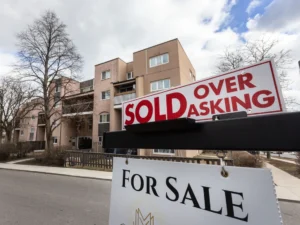As a first-time home buyer, the down-payment required is minimum 5% which means it’s time to start saving up cash! However, purchasing a home tends to come with plenty of additional costs like furniture and insurance, which is why we recommend saving up even more than your minimum required amount. If you’re ready to start browsing through real estate listings, knowing how to save for a down-payment on a house is helpful. Thankfully, we’re here to help!
Pay off Debt
The first step to saving up for your minimum down-payment is to pay off any outstanding debt, especially on credit cards. Not only will this help you get approved for a mortgage loan from the lender, but it will also be beneficial once you purchase the property itself. This way, instead of throwing a few hundred dollars on credit cards every month, you can instead put that towards expenses like renovations, decorating, and unexpected necessities.
Create Goals
It’s vital to know how much you can afford for a home. Mortgage brokers will approve you for a maximum lending amount, so it’s a good idea to get pre-approved as soon as possible. This way, you can start goal-setting for how much you’ll need to save and when you’d like to have the money in your account. This creates a realistic opportunity for you to set aside cash to put towards your property investment.
Open up a Separate Savings Account
Opening up a separate savings account can be surprisingly helpful for reaching your goals. Using a “deposit only” savings account as a method for putting aside cash assists those who have a hard time not spending their savings. Reason being, they wouldn’t be exposed to the money every time they opened their online banking and would only be able to see it if they logged in to that particular account. Plenty of people, especially millennials, are heavily influenced by a vibrant lifestyle which makes it harder to save. By opening up a separate account, they’re more likely to forget the cash is even there. Try setting up automatic transfers for an amount you can afford!
Create a Budget
Creating a budget works wonders for cutting expenses! Monthly, pick a time and day that works best for you, sit down with a pen and paper or a computer and write out all your monthly expenses. This includes rent, mobility and utility bills, groceries, entertainment, restaurants, shopping, vehicle expenses and literally whatever else you spend on. This sheds plenty of light on where your cash goes and you can quickly learn to avoid overspending. We hate to say it, but this means making cuts in your budget! Use the extra money to put into your savings account and make sure you follow your budget.
Meal Plan
Meal planning is another effective method for cutting expenses and saving money instead. Some time at the beginning of every week, make a daily meal plan! Sound boring? It doesn’t have to be! Invest in fancy meal planners or chalkboards to hang up on your wall or fridge and research fun food blogs for easy recipes! Honestly, meal planning is really fun if you make it that way. Tip: Make freezer friendly dinners or large-portion recipes that produce plenty of leftovers. This way, you’re not preparing a new dinner every single day and have a better opportunity to effectively save for your house.
Saving up enough money for your down-payment is a necessary step in the home-buying process. Putting aside even more than that is certainly recommended so you aren’t stuck with unexpected expenses and no way to pay for them all. By closely following our advice on how to put away enough cash for real estate investment, the home-buying process will be much easier for you. If you’d like to know more about effective saving methods or if you’re looking for additional information on mortgage rates or getting approved for a loan, get in touch with us! Mortgages are our specialty and it’s what we love to do! We’d be more than happy to lend out our knowledge, advice and tips on moving you into the house you’ve always wanted.















